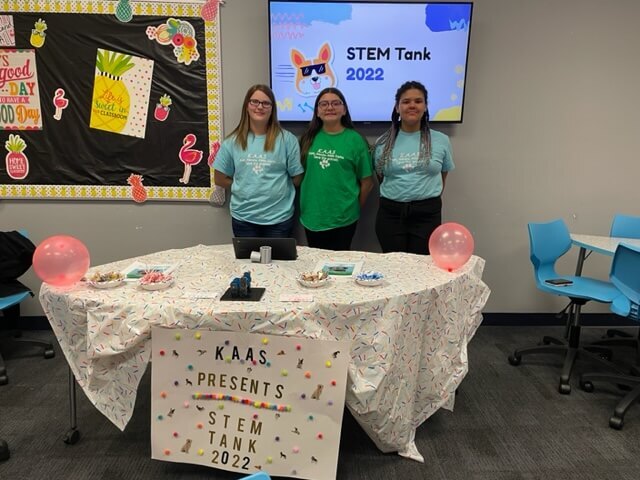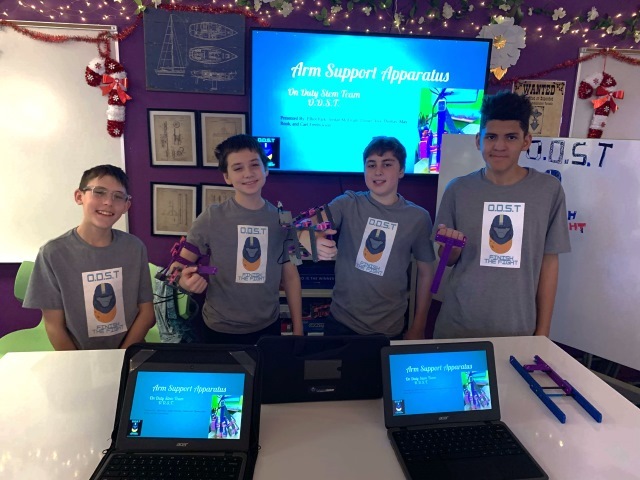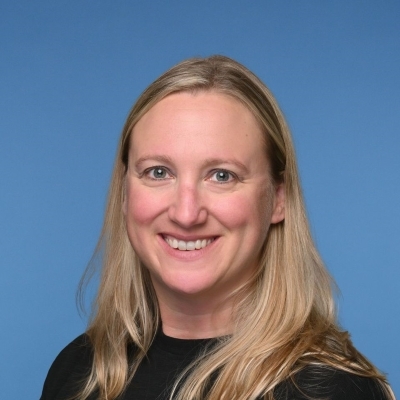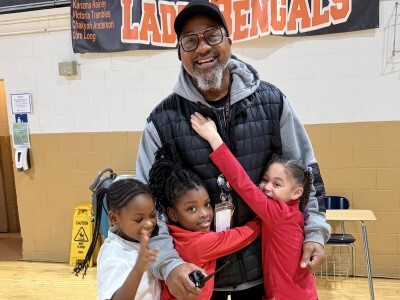The Changing Role of the Teacher in STEM-focused Project-Based Learning
Topics

When educators design and create new schools, and live next gen learning themselves, they take the lead in growing next gen learning across the nation. Other educators don’t simply follow and adopt; next gen learning depends on personal and community agency—the will to own the change, fueled by the desire to learn from and with others. Networks and policy play important roles in enabling grassroots approaches to change.
Project-based learning (PBL) transforms classrooms by empowering students and redefining the role of the teacher.
This blog post is a remix of a November 22, 2024, podcast episode featured on EDU Café, hosted by Kathryn Kennedy. Project-based learning (PBL) transforms classrooms by empowering students and redefining the role of the teacher. As Claire Romzek’s experience shows, PBL is a dynamic, rewarding approach that equips students with the skills they need for success in STEM and beyond. Whether you’re an educator, administrator, or parent, there’s something inspiring to take away from this innovative learning model.
Kathryn Kennedy: Welcome, Claire! Please take a few minutes to introduce yourself.
Claire Romzek: Thank you! I'm Claire Romzek, the magnet coordinator at Lied STEM Academy in Las Vegas, Nevada. My journey in education started as an elementary school teacher. I eventually transitioned to middle school, where I taught computer science. What drew me to this school was its project-based learning approach, which aligned perfectly with my passion for fostering creativity and critical thinking in students.

Kathryn Kennedy: That’s fantastic, Claire. Thank you for continuing the conversation we started during the Project Lead the Way and EdWeek-hosted webinar on Personalized Learning in the STEM Classroom. I’m thrilled to dive deeper into the role of teachers in STEM-focused project-based learning. Let’s start with the big picture: What do you see as the teacher’s role in this environment?
Claire Romzek: The teacher’s role is definitely that of a facilitator. In a traditional classroom, teachers often deliver direct instruction and control the pace and content. In project-based learning (PBL), the focus shifts to creating authentic learning experiences.
Instead of leading from the front, teachers guide students as they navigate challenges and explore solutions. It’s about being present to support students when they struggle rather than providing all the answers. Every project evolves differently based on the students involved, even if it’s the same project across multiple periods. This makes lesson planning less about rigid outlines and more about preparing to adapt.
Kathryn Kennedy: I love that shift! How does this change affect the classroom experience, and what does it mean for student engagement?
Claire Romzek: It makes the classroom experience more dynamic and student-centered. In a PBL setting, students take ownership of their learning. They’re not just absorbing information; they’re actively applying it to solve problems and create solutions.
For example, in my computer science class, we have a unique setup where each table has a TV for projecting work. One student might lead by operating the computer while others collaborate, discuss, and direct. This setup encourages teamwork, peer feedback, and real-time problem-solving.

Students are more engaged because they see the relevance of what they’re learning. They understand that their projects have real-world applications, which motivates them to put in the effort.
Kathryn Kennedy: That’s inspiring! How do you approach assessing students in a PBL environment like that?
Claire Romzek: Assessment in PBL is much more formative and ongoing. Instead of grading every step of a project, I provide feedback in real-time as needed.
For instance, when students are working on a design brief—the initial step in the design process—they project their work and call me over when they’re ready for feedback. I either approve it so they can move to the next step or offer suggestions for improvement. This immediate feedback helps them refine their work without losing momentum and engagement.
This approach also lightens the teacher’s load outside the classroom. One of my colleagues tried this method and mentioned how exhausted she felt at the end of the school day. But then she realized she wasn’t taking work home. Instead, all the assessment and feedback were happening during class time, which made her evenings her own again.
Kathryn Kennedy: That’s such a great example of how PBL can benefit both students and teachers. Another question I have is for your role as a coordinator. What metrics or outcomes do you use to evaluate the overall success of your STEM program?
Claire Romzek: One of our standout initiatives is STEM Tank, a semester-long project where students innovate or invent something within a specific theme. For example, this semester’s theme is natural disaster mitigation.
Students begin by building background knowledge in their content areas, then they move into the design process. At the end of the semester, they present their projects in a convention-style event, where community members are invited to the showcase and provide feedback.
It’s not just about the final product—it’s about the skills students develop along the way.
Beyond the projects themselves, we emphasize STEM attributes:
S: Solving problems
T: Trial and error
E: Effective communication
M: Mental perseverance
These attributes guide our metrics. It’s not just about the final product—it’s about the skills students develop along the way. Reflection is also key. Even if a project isn’t finished, students learn to document their process, identify challenges, and propose next steps. This reflective practice prepares them for real-world problem-solving.

Kathryn Kennedy: I love how this ties into employability and life skills. Bringing the community into the process also adds a powerful layer of accountability for students and pride in their efforts.
Claire Romzek: Absolutely. Students know their work will be seen by an audience beyond their teachers and peers. That accountability and pride pushes them to step up.
I’ve seen students who initially struggle but transform when they realize their project is going to be publicly presented. One year, a group started with very little—a basic idea and no visuals. After presenting to one visitor, they spent every free moment revising their work. By the end of the event, their presentation was expanded upon, polished, and their confidence was through the roof.
Kathryn Kennedy: That’s such a powerful example of real-world learning. What advice would you give to educators looking to implement PBL in their own classrooms?
Claire Romzek: Patience and flexibility are essential. PBL is messy—it’s not a linear process, and things don’t always go as planned.
Start by planning thoroughly, but be ready to adapt. If a group wants to take their project in an unexpected direction, let them explore it. Be open about learning alongside your students. For example, if they propose an idea you’re unfamiliar with, embrace the opportunity to figure it out together.
Reflection is also crucial. After each project, think about what worked, what didn’t, and how you can improve. This process not only helps you grow as an educator but also makes future projects smoother.

Finally, trust the process. It might feel chaotic at times, but students will rise to the occasion. Watching them take ownership of their learning and develop real-world skills is incredibly rewarding.
Kathryn Kennedy: That’s fantastic advice. Before we wrap up, is there anything else you’d like to share?
Claire Romzek: Just that it’s important to remember why we’re doing this. The skills students gain through PBL—collaboration, problem-solving, resilience—will serve them long after they leave our classrooms.
I always tell my students, “You might not see the value of this now, but one day, when you’re working on a project or leading a team, you’ll think back to these experiences and realize how much you learned.” Seeing our first group of sixth graders, now seniors, come back and share how STEM Tank in sixth grade prepared them for their capstone projects six years later is a testament to the long-term impact of this approach.
Kathryn Kennedy: That’s such a powerful full-circle moment. Kudos to you and your school for establishing this meaningful approach to learning. Thank you so much, Claire, for sharing your expertise, insights, and experiences. It’s been an absolute pleasure.
Claire Romzek: Thank you!
All photos courtesy of Lied STEM Academy.




